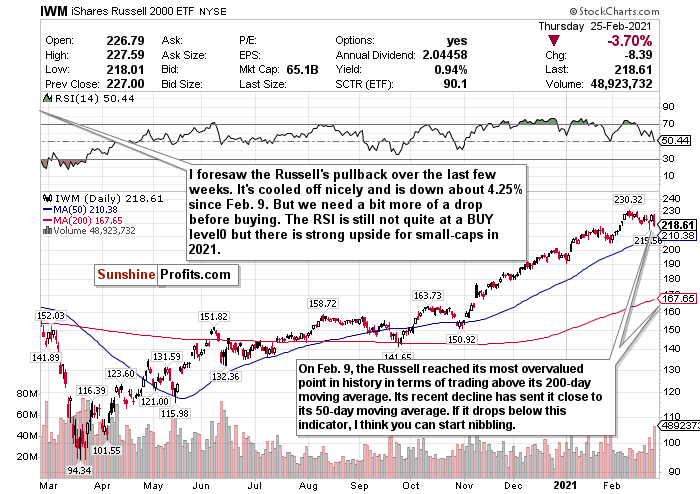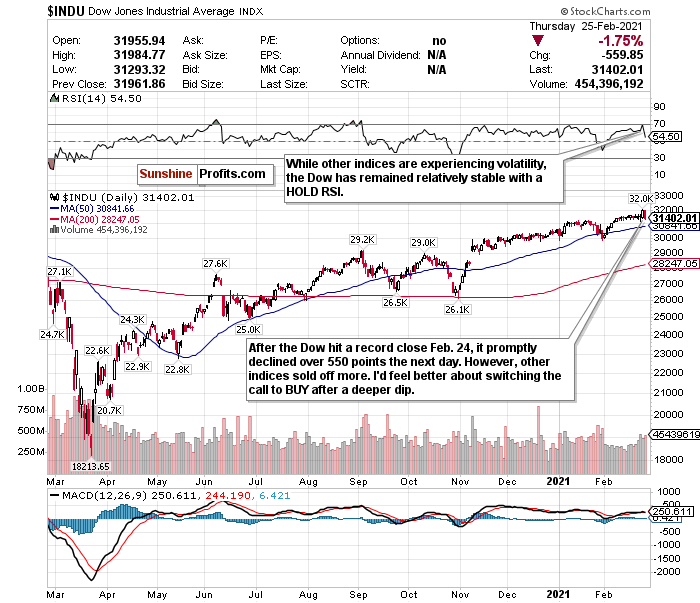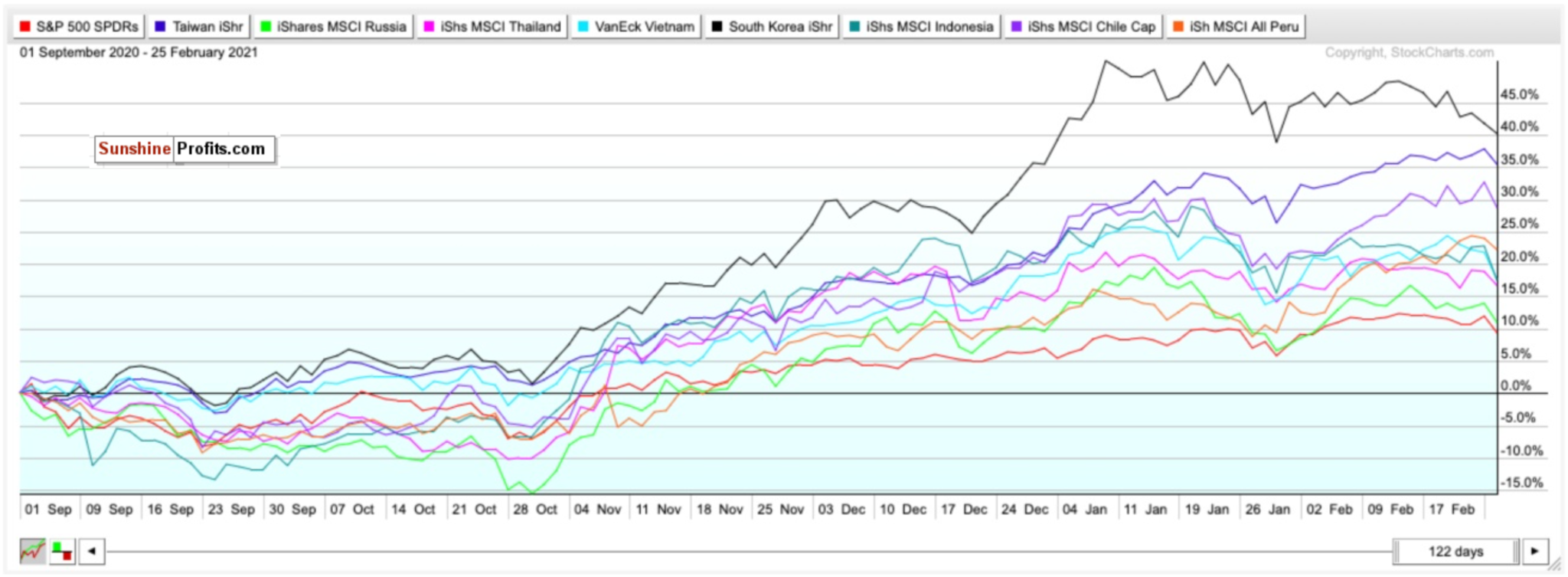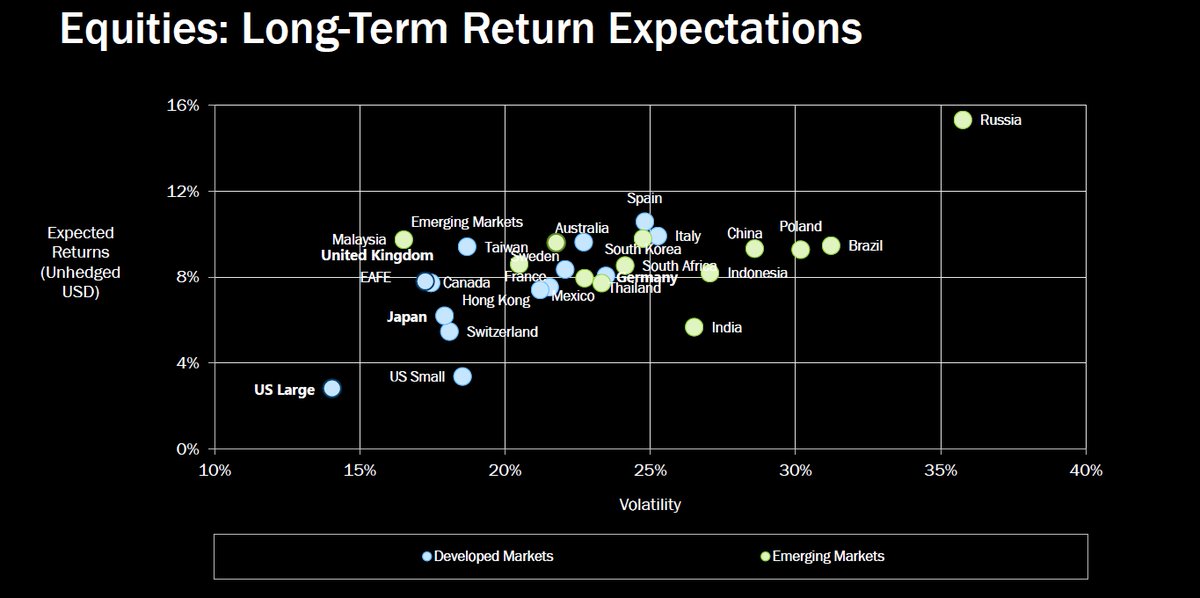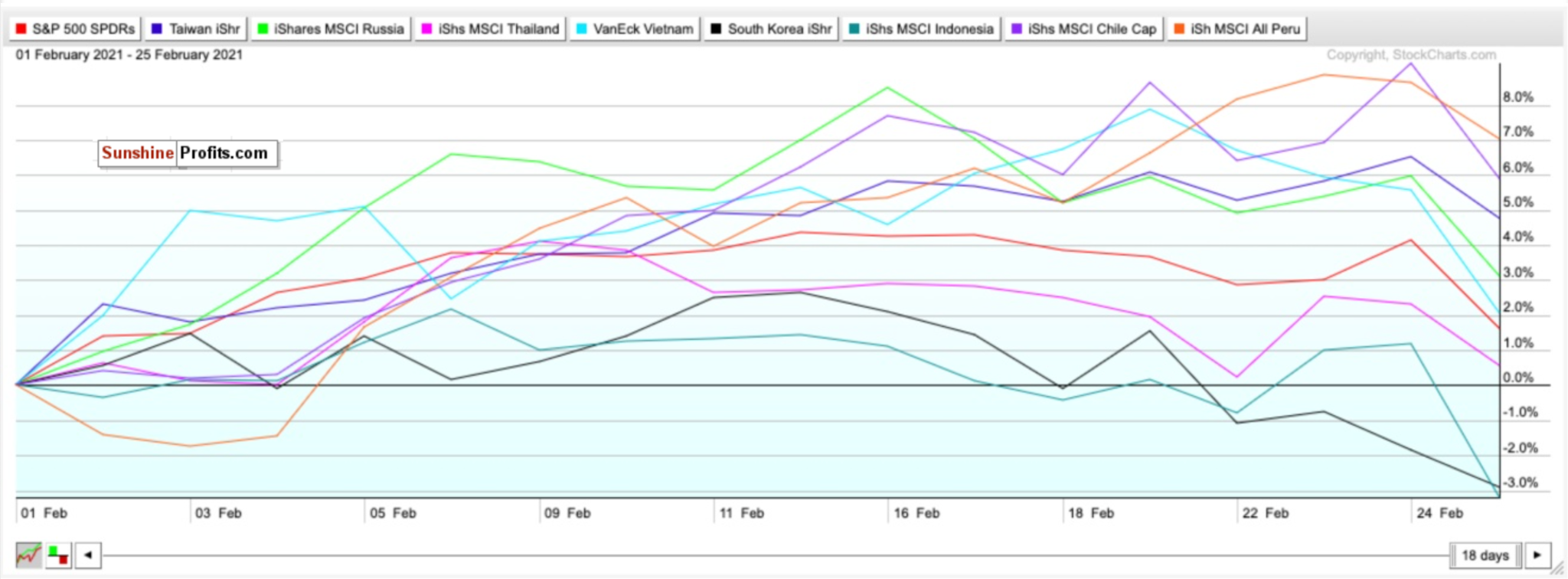Tuesday (Feb. 23) saw the Dow down 360 points at one point, and the Nasdaq down 3% before a sharp reversal that carried it to Wednesday (Feb. 24).
Thursday (Feb. 25) was a different story and long overdue.
Surging bond yields continued to weigh on tech stocks significantly. When the 10-year yield pops by as much as 20 basis points in one day to reach a 1-year high, that will happen.
Overall, the market saw a broad sell-off with the Dow down over 550 points, the S&P falling 2.45%, the Nasdaq tanking over 3.50%, and seeing its worst day since October, and the small-cap Russell 2000 shedding 3.70%.
Rising bond yields are a blessing and a curse. On the one hand, bond investors see the economy reopening and heating up. On the other hand, with the Fed expected to let the GDP heat up without hiking rates, say welcome back to inflation.
I don’t care what Chairman Powell says about inflation targets this and that. He can’t expect to keep rates this low, buy bonds, permit money to be printed without a care, and have the economy not overheat.
He may not have a choice but to hike rates sooner than expected. If not this year, then in 2022. I no longer buy all that talk about keeping rates at 0% through 2023. It just can’t happen if bond yields keep popping like this.
This slowdown, namely with the Nasdaq, poses some desirable buying opportunities. The QQQ ETF, which tracks the Nasdaq is down a reasonably attractive 7% since February 12. But there still could be some short-term pressure on stocks.
That correction I’ve been calling for weeks? It may have potentially started, especially for tech. While I don’t foresee a crash like we saw last March and feel that the wheels are in motion for a healthy 2021, I still maintain that some correction before the end of March could happen.
I mean, we’re already about 3% away from an actual correction in the Nasdaq.
Bank of America also echoed this statement and said, “We expect a buyable 5-10% Q1 correction as the big ‘unknowns’ coincide with exuberant positioning, record equity supply, and as good as it gets’ earnings revisions.”
Look. This has been a rough week. But don’t panic... look for opportunities. We have a very market-friendly monetary policy, and corrections are more common than most realize.
Corrections are also healthy and normal market behavior, and we are long overdue for one. Only twice in the last 38 years have we had years WITHOUT a correction (1995 and 2017), and we haven’t seen one in a year.
A correction could also be an excellent buying opportunity for what could be a great second half of the year.
My goal for these updates is to educate you, give you ideas, and help you manage money like I did when I was pressing the buy and sell buttons for $600+ million in assets. I left that career to pursue one to help people who needed help instead of the ultra-high net worth.
With that said, to sum it up:
While there is long-term optimism, there are short-term concerns. A short-term correction between now and the end of Q1 2021 is possible. I don’t think that a decline above ~20%, leading to a bear market, will happen.
Hopefully, you find my insights enlightening. I welcome your thoughts and questions and wish you the best of luck.
Can We Buy the Russell Yet?
Figure 1- iShares Russell 2000 ETF (IWM)
Since February 9, the Russell 2000 is down about 4.3%. Although I love this index’s upside for 2021, I feel this slowdown was long overdue. I’d like a bit more of a decline, though, before cautiously buying.
The Nasdaq’s downturn is probably more buyable than the Russell’s right now, even though I feel the buzz behind a reopening economy favors the Russell more.
As tracked by the iShares Russell 2000 ETF (IWM), small-cap stocks have been on a rampage since November.
Since the market’s close on October 30, the IWM has gained nearly 43.24% and more than doubled ETFs’ returns tracking the larger indices. If you thought that the Nasdaq was red hot and frothy, you have no idea about the Russell 2000.
Not to mention, year-to-date, it’s already up approximately 13%.
It pains me not to recommend you to BUY the Russell just yet. I love this index’s outlook for 2021. Aggressive stimulus, friendly policies, and a reopening world could bode well for small-caps. Consumer spending, especially for small-caps, already appears to be very pent-up as well.
But we just need to hold on and wait for it to cool down just a little bit more for a better entry point.
HOLD. If and when there is a deeper pullback, BUY for the long-term recovery.
Another Losing Streak for the S&P?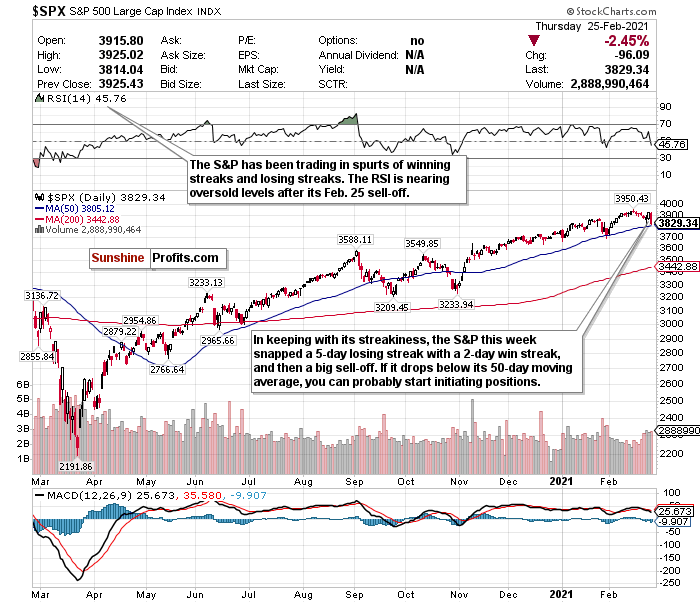
Figure 1- S&P 500 Large Cap Index $SPX
The S&P continues to trade as a streaky index. It seemingly rips off multiple-day winning streaks or losing streaks weekly.
Before this week, here’s how the S&P traded in February. It kicked off the month by ripping off a streak of gains in 6 of 7 days. It then promptly went on a 3-day losing streak, followed by a two-day winning streak and more record closes.
Now for this week? We snapped a 5-day losing streak on Tuesday (Feb. 23) with a 2-day winning streak, and then promptly plummeted on Thursday (Feb. 25).
It’s hard to consider this much of a pullback, though. It’s down just about 2.6% since February 12.
The index started February off hot but has cooled off somewhat in the last two weeks. Even though there’s a healthy outlook for the second half of the year, if bond yields and consumer behavior shows us anything, it’s that we could be closer to inflation than we realize- despite Powell’s assurances.
The S&P’s RSI is still hovering at a HOLD level, but it’s starting to creep to oversold and a BUY. If it declines any more, this could be a shrewd long-term BUY.
HOLD for now, but be prepared to start buying if it declines some more. For an ETF that attempts to directly correlate with the performance of the S&P 500, the S&P 500 SPDR ETF (SPY) is a great option.
Big Dow Sell-off After Record Close
Figure 3- Dow Jones Industrial Average $INDU
After lagging behind the S&P 500, Nasdaq, and Russell 2000, the Dow has been the only index to trade marginally higher the last two weeks.
But all of this week’s gains, as well as the Dow’s record close Wednesday (Feb. 24), went away real quickly on Thursday (Feb. 25).
Despite the market volatility and bond yield fears, the Dow has remained relatively stable while remaining around record highs.
In other words? It seems to be the only index not behaving as if it’s on MDMA and may actually have the most room to run.
Yes, there are underlying concerns, and the market is more of a house of cards than anyone realizes. But the Dow is comparatively stable and undervalued to the others, and I can appreciate that.
If you want to start initiating positions, go ahead. It’s at a decent entry point, and Thursday’s (Feb. 25) decline was needed. Especially considering that many analysts call for it to end the year at 35,000.
From my end, though, I’d prefer to hold on and assess the situation.
The Dow could see another pullback.
My call on the Dow stays a HOLD, but this could change soon.
For an ETF that aims to correlate with the Dow’s performance, the SPDR Dow Jones ETF (DIA) is a reliable option.
Beware of Inflation
“The rich world has come to take low inflation for granted. Perhaps it shouldn’t.” -The Economist.
I think Jay Powell is being a bit cavalier in his inflation thoughts. Inflation may not be an issue now. But what happens 6 months from now? 9 months from now? Will the Fed let its 2% target overshoot?
While Jay Powell’s statement this week certainly did a lot to ease fears, there’s an air of “if not if, but when” concerning inflation.
Rising bond yields and inflation are slowly but surely worrying investors more. Pay very close attention to how this trends over the next few weeks to months.
Pent-up consumer demand is great. Retail sales crushing expectations reflect this. However, rising bond yields coupled with a Fed showing no signs of hiking interest rates is as strong a sign of inflation as you can get.
Bond yields are rising because investors expect inflation to return and almost desire higher interest rates sooner rather than later.
Five-year inflation expectations have also more than doubled from last year’s low and are now at around their highest levels since 2013.
As hedges against inflation, consider BUYING the SPDR TIPS ETF (SPIP), the Invesco Optimum Yield Diversified Commodity Strategy No K-1 ETF (PDBC), and the iShares Cohen & Steers REIT ETF (ICF).
Mid-Term/Long-Term
Surging Copper=Wins for Peru and Chile
Figure 4- SPY, EWT, ERUS, THD, VNM, EWY, EIDO, ECH, EPU comparison chart- Sep. 1, 2020-Present
Since September, the SPDR S&P 500 ETF (SPY) has gained around 9.33%.
But if you compare that yield to that of my top emerging market picks for 2021, it has underperformed.
Consider this too.
A surge in commodity prices due to a weakening dollar combined with shifting demographics could send emerging markets upwards in the long-term too.
PWC also believes that emerging markets (E7) could grow around twice as fast as advanced economies (G7) on average in the coming decades.
For 2021, the following are my BUYs for emerging markets and why:
iShares MSCI Taiwan ETF (EWT)- Developing country, with stable fundamentals, diverse and modern hi-tech economy, regional upside without China’s same geopolitical risks.
iShares MSCI Thailand ETF (THD)- Bloomberg’s top emerging market pick for 2021 thanks to abundant reserves and a high potential for portfolio inflows. Undervalued compared to other ETFs.
iShares MSCI Russia Capped ETF (ERUS)- Bloomberg’s second choice for the top emerging market in 2021 thanks to robust external accounts, a robust fiscal profile, and an undervalued currency. Red-hot commodity market, growing hi-tech and software market, increasing personal incomes. Compared to many other developed and emerging markets, Russia could have more than a 35% upside for its equities in the long-term as well.
Figure 5- Equities: Long-Term Return Expectations Developed Markets/Emerging Markets
VanEck Vectors Vietnam ETF Vietnam (VNM)-Turned itself into an economy with a stable credit rating, strong exports, and modest public debt relative to growth rates. PWC believes Vietnam could also be the fastest-growing economy globally. It could be a Top 20 economy by 2050.
iShares MSCI South Korea ETF (EWY)- South Korea has a booming economy, robust exports, and stable yet high growth potential. The ETF has been the top-performing emerging market ETF since March 23.
iShares MSCI Indonesia ETF (EIDO)- Largest economy in Southeast Asia with young demographics. The fourth most populous country in the world. It could be less risky than other emerging markets while simultaneously growing fast. It could also be a Top 5 economy by 2050.
iShares MSCI Chile ETF (ECH)- One of South America’s largest and most prosperous economies. An abundance of natural resources and minerals. World’s largest exporter of copper. Could boom thanks to electric vehicles and batteries because of lithium demand. It is the world’s largest lithium exporter and could have 25% of the world’s reserves.
iShares MSCI Peru ETF (EPU)- A smaller developing economy but has robust gold and copper reserves and rich mineral resources.
Let’s take a look at the top emerging market performers month-to-date.
Figure 6- SPY, EWT, ERUS, THD, VNM, EWY, EIDO, ECH, EPU comparison chart- Feb. 12, 2021-Feb. 19, 2021
While Indonesia and South Korea have lagged this month, and each declined roughly 3%, this month's real story has been the performance of Peru (+7.04%) and Chile (+5.90%).
When you look at how much commodities have risen, especially “clean metals” and “battery metals” like copper, lithium, graphite, cobalt, and more, Peru and Chile’s outperformance isn’t exactly shocking.
Both countries have robust mineral reserves, and Chile, primarily, is known as the world’s largest copper and lithium exporter. Month-to-date, while the major indices have flip-flopped, copper has popped by over 20%.
Outside of the aforementioned country-specific ETFs, you can also BUY the iShares MSCI Emerging Index Fund (EEM) for broad exposure to Emerging Markets.
Long-Term
I remain convinced that the economic recovery is going better than expected as the progress in administering the vaccines improves. But it’s a blessing and a curse if it goes “too well.”
Continue to pay attention to complacency, overvaluation, bond yields, and especially inflation.
We may be seeing a rotation out of tech and into small-caps, value stocks, and cyclical stocks like what we saw in November. But I will have a much better feeling for stocks in general in the second half of the year- especially if they cool down more, as I hope.
I think we are overdue for another down week or two before entering a powerful buying opportunity for the second half of the year. We may be at the beginning of the end of the pandemic, and despite what could be a bumpy ride, 2021 should be a big year for stocks.
Summary
Is it possible to become increasingly optimistic while at the same type becoming increasingly cautious?
That’s how I feel right now.
I was hoping that as the vaccines became more widespread and COVID numbers improved, the tug-of-war between optimism and pessimism would subside.
But I was wrong. It’s just a new tug of war now—stocks vs. bonds.
The crash and subsequent record-setting recovery we saw in 2020 is a generational occurrence. I can’t see it happening again in 2021. But as I said in the intro, I think a correction is inevitable.
We’re too complacent right now, and there are signs that the “rational bubble” could pop.
If there is a short-term downturn, though, take a breath, stay cool, and use it as a time to find buying opportunities. Do not get caught up in fear and most of all:
NEVER TRADE WITH EMOTIONS.
Consider this too. Since markets bottomed on March 23rd, ETFs tracking the indices have seen returns like this: Russell 2000 (IWM) up 121.95%. Nasdaq (QQQ) up 84.44%. S&P 500 (SPY) up 73.67%. Dow Jones (DIA) up 71.31%.
In the long-term, markets always move higher and focus on the future rather than the present.
To sum up all our calls, I have a SHORT-TERM BUY call for
- the Invesco QQQ ETF (QQQ)
I have HOLD calls for:
- The iShares Russell 2000 ETF (IWM)
- the SPDR S&P ETF (SPY), and
- the SPDR Dow Jones ETF (DIA)
I am more bullish for all of these ETFs for the second half of 2021 and the long-term.
I also recommend selling or hedging the US Dollar and gaining exposure into emerging markets for the mid-term and long-term.
I have BUY calls on:
- The iShares MSCI Emerging Index Fund (EEM),
- the iShares MSCI Taiwan ETF (EWT),
- the iShares MSCI Thailand ETF (THD),
- the iShares MSCI Russia ETF (ERUS),
- the VanEck Vectors Vietnam ETF Vietnam (VNM),
- the iShares MSCI South Korea ETF (EWY),
- the iShares MSCI Indonesia ETF (EIDO),
- the iShares MSCI Chile ETF (ECH),
- and the iShares MSCI Peru ETF (EPU)
Additionally, because I foresee inflation returning as early as mid to late 2021…
I also have BUY calls on:
- The SPDR TIPS ETF (SPIP),
- the Invesco Optimum Yield Diversified Commodity Strategy No K-1 ETF (PDBC), and
- the iShares Cohen & Steers REIT ETF (ICF)
Thank you.
Matthew Levy, CFA
Stock Trading Strategist


